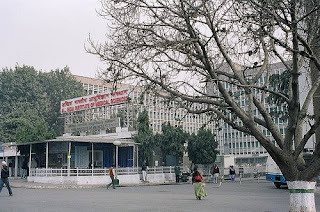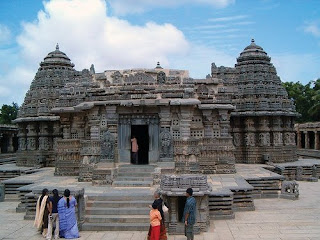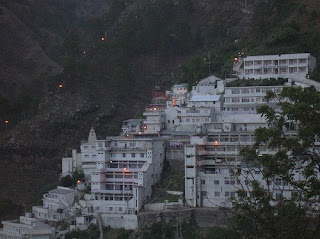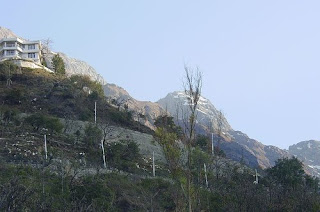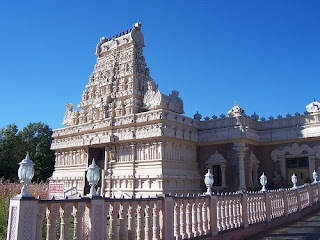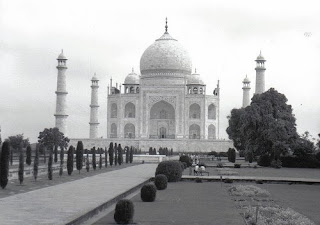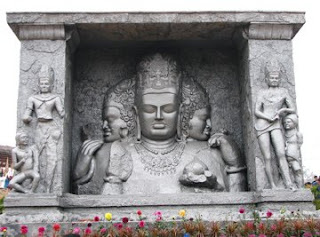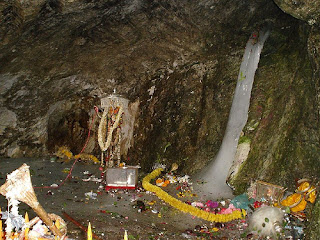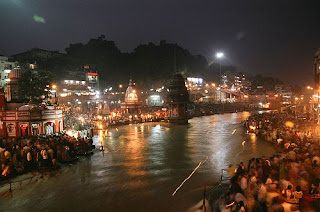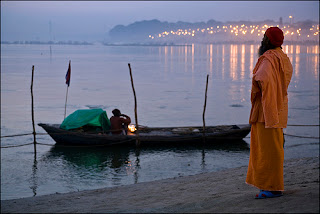Continuing my adventure sports basic minimum standards series, I am providing valuable information regarding the air based activities in India. Among the adventure sports, Aerosports need the highest skill requirements. Aerosport also have the highest risk element and anything that goes wrong hardly gives an opportunity for corrective action. Accordingly adherence to safety guidelines must be followed
meticulously.
Generally the following principles need to be adopted :
(a) The equipment used in each aero-sport must be defined in terms of its specifications, certifying agency and its life (shelf life and usage life), as defined by the manufacturer, who for the purpose must hold a valid authorization for manufacturing the particular aero-sport equipment.
(b) Instructor/operator qualification is very important. It is not enough to have an initial certificate or qualification. Currency and continued evaluation in terms of safety and skill needs to be carried out.
Paragliding
Infrastructure:-
1. Operator must have access to safe and open take off points in case of hill launches. The take off point should be free from obstructions in the take off path and should not have rock or crops which could injure the participant. Cliff take off points must strictly not to be used.
2. The operator must have free and clear access to a designated landing ground free of obstructions such as tall trees, buildings, electric wires etc.
3. First aid must be available at site with Qualified First aid Instructors (having additional knowledge of related accidents), with arrangements with a nearby hospital for quick emergency services.
4. Wind conditions should be strictly monitored and the activity must be done within the weather conditions stipulated by the equipment manufacturer.
Equipment And Accessories
5. Paragliding wings must have APCUL DHV or CEN certification. Such certification should be stitched on the wing and visible for inspection. Harness should be with back protection and harness must be fitted with round type certified rescue parachute.
6. Helmets and Ankle shoes must be compulsory.
7. Proper log books must be maintained for all equipment.
8. Annual inspection and certification of equipment for air worthiness must
be carried out.
Operator Qualification
9. In case of solo flights the pilot should have undergone two full days ground training consisting theoretical and practical training and instructor should satisfy himself of the first launch both in hill and winch launched paragliding. For first 15 launches height should be restricted to Max 500 feet and student should be radio guided. After demonstrated capability for 180 degree stable turns, five spot (20 Mtrs) landings and after the theory paper is cleared, the student may be allowed to carry out free fly. The student pilot must have a valid registration with a club recognised by the Aero Club of India.
10. Tandem pilots must have a tandem pilots licence issued by the competent authority, which will be issued after the following:
(i) 150 logged flights.
(ii) 35 h + logged.
(iii) Pass theory paper
11. All instructors must be current pilots having sufficient knowledge and experience in the sport.
Parasailing
1. Operator Classifications: All operators shall be certified by the appropriate agency in terms of their capability to conduct the activity on land or water, specifically endorsed to allow multi-passenger flight
operations.
2. In Flight Floatation Devices and helmets: At all times passengers participating in parasailing activities over water, while in flight shall wear a properly fitted approved life jacket. Over land, the passengers must wear an ISI approved helmet.
3. Assumption of Risk And Release of Liability Waiver: Without exception, all operators shall require ALL PARTICIPANTS of legal age or if a minor; a parent or legal guardian to read and sign an assumption of Risk and Release of Liability waiver prior to starting the activity.
4. Passenger Safety Briefing: All parasail participants shall be required to view a Parasail Safety Briefing video and/or be given a written Parasail Safety Briefing handout. In addition, the crew shall give a pre-flight verbal summary of the briefing before any parasail flight activities commence, which should include the following:
a. A description of the activity itself.
b. Safety precautions while underway and in-flight.
c. Safety and life saving equipment locations.
d. Warnings and Procedures for unexpected events, such as water landings, equipment malfunctions, and towline separation.
e. Procedure in the event of an emergency onboard the vessel.
f. The proper use of signals.
g. Question and answer period.
h. Exclusion of any participant that may be afraid or intimidated prior to
participation.
5. Proximity to Obstructions. Wind restrictions: Operator should have a wind measurement device and should not operate in winds exceeding 18 Kph. Operator shall at all times maintain a minimum operating distance from any surf-zone, shoreline, or fixed object, of not less than 500 feet. In addition, at no time shall a parasail vessel’s operator allow a canopy to pass within the following distance from the shore while an onshore wind is present. (Onshore wind shall be defined as any wind direction that could potentially place a parasail vessel, canopy, or participant in contact with land in the event of the loss of vessel or systems power
and/or line separation.).
6. Responsibility of Vessel Sea worthiness and tow vehicle road worthiness: It shall be the responsibility of the first mate in charge to make certain that the vessel is maintained and is properly equipped in a sea worthy condition. A current written log shall be kept of all mandatory daily inspections and all routine maintenance performed on vessel. Under no circumstances shall the operator and/or crew utilize any equipment outside the parameters for which it was designed and must at all times adhere to manufacturers’ specifications, requirements and/or recommendations. Similar conditions should apply for land based parasailing vehicles.
7. Passenger Weight Restrictions: At no time shall a passenger be allowed to participate in parasailing activities unless they meet the manufacturers’ recommendations or requirements in terms of weight. Passenger must be able to be comfortably and safely fitted into harness.
8. Towline Length Limitations: At no time
(a) shall any vessel’s winch drum be equipped with more than 500 feet of towline, while conducting parasail flight operations. Similarly land based operations should not use more than 500 feet of rope.
(b) Exceed a maximum of 300 feet AGL (Above Ground/ Water Level).
9. Minimum Age Requirements: Children may participate in parasailing activities only after the operator has made reasonable prior judgment that wind and sea conditions are conducive to such activities and extreme caution should be exercised. Children under 12 are not to be allowed.
10. Towline Inspection and Maintenance: Towline in its entirety shall be inspected daily for damage and/or wear and if necessary shall be immediately replaced. Towline shall be kept clean and maintained in accordance with manufacturers’ specifications, requirements and/or recommendations.. A written log of such inspections and maintenance shall be kept at all times.
11. Pre-Flight Weather Evaluation: It is the operators responsibility to evaluate and determine if weather conditions are favorable for parasailing. He shall use all means available to make such a determination. No operator shall knowingly parasail in rain, heavy fog or during a known lighting storm within 50 km from the parasailing area, in addition a daily weather log shall be maintained.
12. Multiple Passenger Flights: Multi-passenger flights shall only be conducted under the following conditions and only after the operator has made reasonable judgment prior to each and every flight. Extreme caution shall be exercised:
a) At no time shall there be more than 2 passengers in any canopy.
b) Wind conditions must be adequate, stable and consistent.
c) Conditions must be conducive to such activities.
d) Commercial equipment specifically designed and professionally manufactured for multi-passenger flight operations must be utilised.
e) All equipment must adhere to manufacturers’ specifications, requirements and/or recommendations.
f) Vessel’s winch system must be equipped with a functional levelwinder during all multi-passenger flights.
Bungee Jumping
1. Essential requirements: All parts of the jump line must be duplicated. This extends from the connection of the bungee to the jumper and the connection to the structure at the other end of the line. Normally the jumper should have an attachment to ankle straps, and another to a body or sit harness.
2. Equipment (harnesses, karabiners) should be of sound construction and suitable for this use. Mountaineering equipment from reputable suppliers is appropriate. Karabiners should be of the screw gate type.
3. Braided ropes: At least 2 braided ropes should be used and matched to the weight of the jumper; they should be to BS 3F 70 1991 specification for heavy duty braided rubber cord, or to a demonstrably similar standard.
4. Unbraided ropes: Normally one unbraided rope is adequate because of the in-built redundancy from its structure of approximately one thousand individual strands bound together. Each rope should have an examiners certificate from an independent source and be selected according to the weight of the jumper.
5. Rope log books should be kept, describing maximum load, and numbers of jumps and drop tests undertaken, and in the case of unbraided ropes, any other conditions required by the examiner (eg length of time in sunlight). Ropes have a finite life and operators should be able to demonstrate that this has not been exceeded.
6. There should be a written operating procedure. If not written, elements will be more likely to be forgotten or short circuited. Both operators and enforcement officers should be able to check that safe procedures have been established and are being followed.
7. The procedure should cover at least:
(1) medical enquiry;
(2) age verification - if under 18, parental consent should be required;
(3) if under 14, they should not be allowed to jump;
(4) weighing and rope selection: There should be a method of checking that the weight of the jumper has been correctly measured and recorded so as to ensure that the correct rope is selected for each jumper;
(5) attachment of each part of harness and ropes, and the checking of each action by a second trained person;
(6) briefing of jumper;
(7) entry into and riding in cage;
(8) re-instruction and jump; and
(9) retrieval of jumper.
8. Use of mobile cranes: Use of mobile cranes is not recommended allowed as this is too dangerous.
9. Other important elements: Training of personnel is of paramount importance. Each job undertaken requires a different level of training and experience. Those in charge should be able to demonstrate that everyone who is carrying out a task has enough experience to do so, unless under direct supervision by another experienced person. There should be a proper training schedule showing how a person progresses from one level of competence to the next. The schedule of work should clearly state, who carries out every safety critical action and who checks it. Each person should know the tasks, which they are permitted to carry out and those which they are not authorised to do. To date, all known fatal accidents world wide have resulted from human error.
10. The person in overall charge should keep close control of the site. Arrangements should be made to exclude spectators from the jump zone for their own safety and to avoid distraction of the operators.
11. Anyone in a cage should be securely attached to it. Spectator riding, especially by children, should be discouraged.
12. There should be a dead-weight drop test of the whole line at the beginning of the day to ensure its integrity.
13. Spares for all the components in the jump line should be kept on site so as to be available for immediate replacement of suspect components.
14. An air bag should be used for jumps over land with unbraided ropes. The purpose of the bag is to prevent a jumper striking the ground if an incorrect rope selection is made. It is not to safeguard jumpers who fall due to a failure to properly connect them to the supporting structure. Braided ropes to BS 3F 70 have an outer covering which tightens when stretched. Unbraided ropes do not, so there is more risk of a jumper descending too far if a wrong rope selection is made. If a jump is made over water with an unbraided rope, relying on the water to perform the function of the airbag, steps should be taken to ensure that there are no obstructions under the water surface. ln addition, suitable arrangements should be made for rescue from the water.

